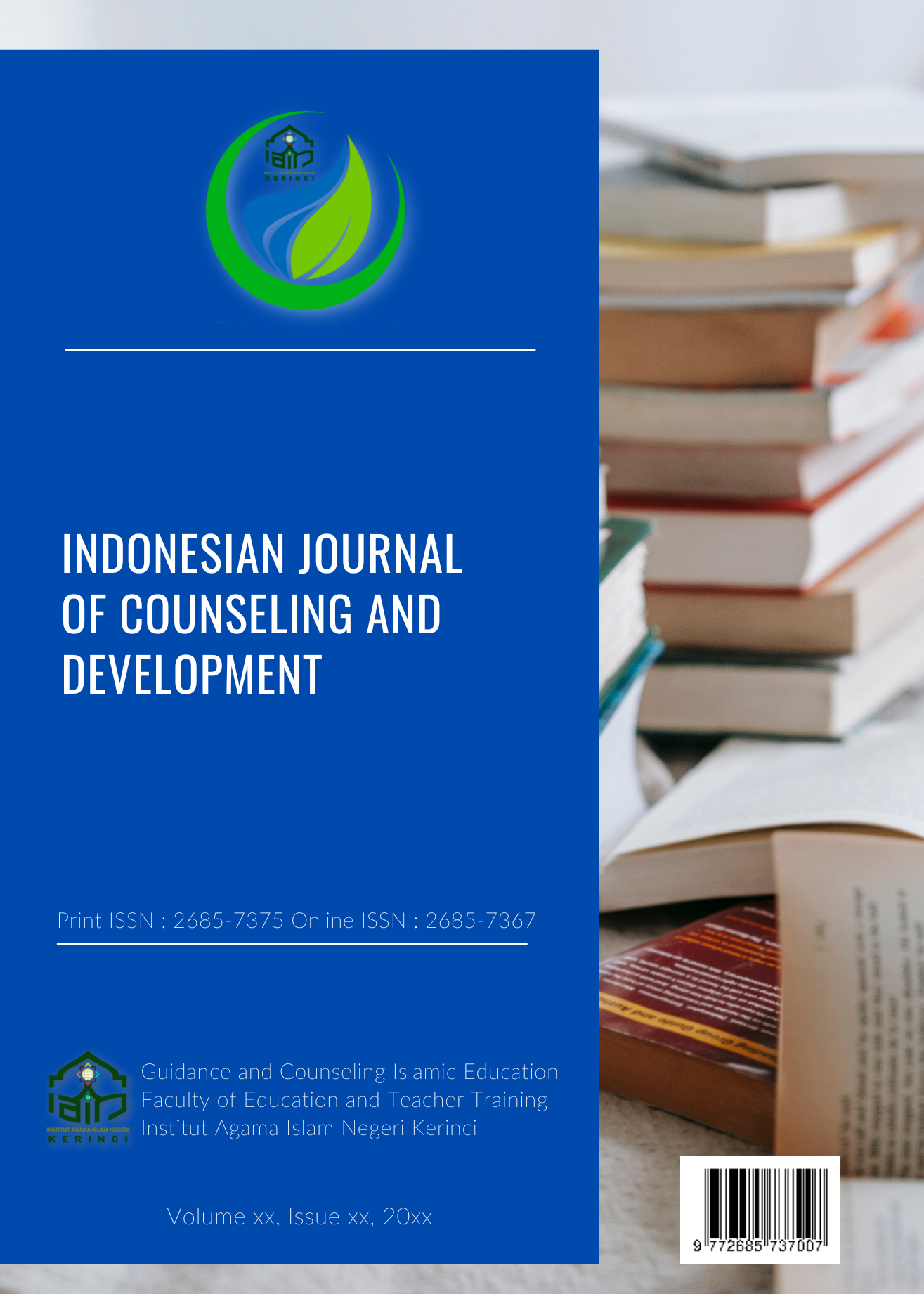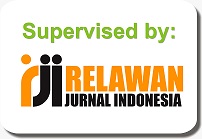Strengthening Creative Character of Students in Cumo Pulai Art Studio
Abstract
This study explores the contribution of extracurricular art activities in strengthening students’ creative character through the Cumo Pulai Art Studio at SMAN 4 Sungai Penuh, Jambi, Indonesia. Character education is a central mission of national education, emphasizing not only academic excellence but also moral, social, and creative capacities needed in the 21st century. Creativity, defined as originality, flexibility, elaboration, and problem-solving ability, is an essential competence; however, preliminary observations indicated that students in the art studio often lacked initiative, showed low motivation, and produced limited original works. This study aimed to examine the processes of strengthening creative character, the outcomes achieved, and the factors that support or hinder the implementation of the program. Employing a qualitative descriptive design, data were collected through observations, semi-structured interviews with students, teachers, and studio coaches, and document analysis. Participants were selected purposively from students actively engaged in the art studio. Data were analysed using Miles and Huberman’s interactive model, which includes data reduction, data display, and conclusion drawing. The findings show that the Cumo Pulai Art Studio created a conducive learning environment where students enhanced originality through choreography and music composition, improved collaboration through group performance, and developed discipline and responsibility by following structured rehearsals. The program also fostered cultural preservation by encouraging students to value and reinterpret local traditions in creative ways. Despite these benefits, challenges such as limited facilities, lack of skilled instructors, and inconsistent student attendance were identified. The study concludes that extracurricular art education can significantly strengthen creative character and cultural appreciation, suggesting that integrating such programs into schools offers an effective strategy for holistic student development.
Downloads
References
Abramo, J. M., & Reynolds, A. (2015). “Pedagogical Creativity” as a Framework for Music Teacher Education. Journal of Music Teacher Education, 25(1), 37–51. https://doi.org/10.1177/1057083714543744
Astari, A. T. J., Cahyono, A., & Malarsih, M. (2023). The contribution of Sanggar Siradjuddin Gowa as a Developer of Traditional Dance Arts in the Context of Community-Based Arts Education. Edumaspul: Jurnal Pendidikan, 7(2). https://doi.org/10.33487/edumaspul.v7i2.6802
Berkowitz, M. W., & Bier, M. C. (2004a). Research-Based Character Education. The ANNALS of the American Academy of Political and Social Science, 591(1), 72–85. https://doi.org/10.1177/0002716203260082
Berkowitz, M. W., & Bier, M. C. (2004b). Research-Based Character Education. The ANNALS of the American Academy of Political and Social Science, 591(1), 72–85. https://doi.org/10.1177/0002716203260082
Burnard, P., & Murphy, R. (2013). Teaching music creatively. Routledge. https://www.taylorfrancis.com/books/mono/10.4324/9780203489031/teaching-music-creatively-pamela-burnard-regina-murphy
Eisner, E. W. (2003). The Arts and the Creation of Mind. Language Arts, 80(5), 340–344. https://doi.org/10.58680/la2003322
Golafshani, N. (2003). Understanding Reliability and Validity in Qualitative Research. The Qualitative Report, 8(4), 597–606. https://doi.org/10.46743/2160-3715/2003.1870
Halimah, L., Marwati, L., & Abdillah, F. (2020). Fostering Students’ Creativity through Lapbooking: A Case Study in an Indonesian Primary School Context. Universal Journal of Educational Research, 8(7), 2969–2979. https://doi.org/10.13189/ujer.2020.080725
Hallam, S. (2010). The power of music: Its impact on the intellectual, social and personal development of children and young people. International Journal of Music Education, 28(3), 269–289. https://doi.org/10.1177/0255761410370658
Hardiyat, M. S., Fuadi, D., R, L. E., Minsih, & Widyasari, C. (2023). Entrepreneurship Extracurriculars in Developing Entrepreneurial Character for Elementary School Students. International Journal of Elementary Education, 7(1), 97–105. https://doi.org/10.23887/ijee.v7i1.54914
Kartomi, M. (2012). Musical journeys in Sumatra. University of Illinois Press. https://books.google.com/books?hl=id&lr=&id=5IvZiVFBvtYC&oi=fnd&pg=PP2&dq=Musical+journeys+in+Sumatra.+&ots=udxdI-zDUq&sig=bKgZe2wD6W9K1WSqRdoRgqg1nFo
Kemendikbud, R. I. (2003). Undang-undang RI No. 20 Tahun 2003 tentang Sistem Pendidikan Nasional. Jakarta: Kemendikbud RI.
Leavy, P. (2017). Research design: Quantitative, qualitative, mixed methods, arts-based, and community-based participatory research approaches. Guilford Press.
Lickona, T. (2009). Educating for Character: How Our Schools Can Teach Respect and Responsibility. Bantam. https://books.google.com/books?hl=id&lr=&id=QBIrPLf2siQC&oi=fnd&pg=PA1&ots=xfmnT6utS-&sig=chOV7ZC8qUu4Mey_JFWIkzGVPeo
Lutfiah, V. N., & Hidayati, Y. M. (2023). The Role of Barongan Extracurricular in Fostering Elementary Student Creativity. 2352–2361. https://doi.org/10.2991/978-2-38476-086-2_187
Miftah, M., & Prasetyo, A. (2024). Digital Literacy Mastery and its Role in Human Resource Competitiveness. Advances in Social Science, Education and Humanities Research. https://doi.org/10.2991/978-2-38476-273-6_16
Miles, M. B., Huberman, A. M., & Saldaña, J. (2014). Qualitative data analysis: A methods sourcebook (Third edition). SAGE Publications, Inc.
Muhajir, S. N., Utari, S., & Suwarma, I. R. (2019). How to develop test for measure critical and creative thinking skills of the 21st century skills in POPBL? Journal of Physics: Conference Series, 1157(3), 032051. https://doi.org/10.1088/1742-6596/1157/3/032051
Munandar, U. (2021). Pengembangan kreativitas anak berbakat. PT Rineka Cipta.
Oecd. (2019). An OECD Learning Framework 2030. In G. Bast, E. G. Carayannis, & D. F. J. Campbell (Eds.), The Future of Education and Labor (pp. 23–35). Springer International Publishing. https://doi.org/10.1007/978-3-030-26068-2_3
Pattaro, C. (2016). Character education: Themes and researches. An academic literature review. https://doi.org/10.14658/pupj-ijse-2016-1-2
Patton, M. Q. (2014). Qualitative research & evaluation methods: Integrating theory and practice. Sage publications. https://books.google.com/books?hl=id&lr=&id=ovAkBQAAQBAJ&oi=fnd&pg=PP1&dq=Qualitative+research+and+evaluation+methods+&ots=ZS-02wCFA_&sig=0LNg9gRsReZ9bSVc5TnHbA0IKtI
Rosalina, V. (2021). Nilai -Nilai Pendidikan dalam Karya Tari Kedurai Imbang Semato Alam. Jurnal Ilmiah Wahana Pendidikan, 7(3), 170–176. https://doi.org/10.5281/zenodo.5033548
Runco, M. A., & Jaeger, G. J. (2012). The Standard Definition of Creativity. Creativity Research Journal, 24(1), 92–96. https://doi.org/10.1080/10400419.2012.650092
Salmona, M., Kaczynski, D., & Lieber, E. (2023). Qualitative research writing: Credible and trustworthy writing from beginning to end. Sage Publications.
Sari, A. T. R., & Wahyudi. (2022). BENEFITS OF DANCE EXTRACURRICULAR ACTIVITIES IN ELEMENTARY SCHOOL. Jurnal Pendidikan Dasar Nusantara, 8(1), 151–160. https://doi.org/10.29407/jpdn.v8i1.17952
Sawyer, R. K. (2012). Explaining creativity: The science of human innovation. Oxford University Press.
Sheridan, K. M., Veenema, S., Winner, E., & Hetland, L. (2022). Studio thinking 3: The real benefits of visual arts education. Teachers College Press. https://books.google.com/books?hl=id&lr=&id=j9NyEAAAQBAJ&oi=fnd&pg=PT18&dq=Studio+thinking+2:+The+real+benefits+of+visual+arts+education&ots=8u0Rz_owj5&sig=EoPCfOD7paFsg8QiUFILXXnyTtA
Souliotou, A. Z. (2021). Implementation of New Technologies in Traditional Handcrafts: Examples From the Higher Education. International Conference on Education. https://doi.org/10.17501/24246700.2021.7151
Supeni, S., & Harini, S. (2021a). Internalizing character education through javanese traditional dance to realize child-friendly school. Jurnal Civics: Media Kajian Kewarganegaraan, 61–69. https://doi.org/10.21831/jc.v18i1.38452
Supeni, S., & Harini, S. (2021b). Internalizing character education through javanese traditional dance to realize child-friendly school. Jurnal Civics: Media Kajian Kewarganegaraan, 61–69. https://doi.org/10.21831/jc.v18i1.38452
Supeni, S., Nurati, D. E., Sufa, F. F., & Jumintono. (2019). Character Education Development Model based on Regional Culture. Journal of Advanced Research in Dynamic and Control Systems, Volume 11(05-Special Issue), 673–683.
Susilo, M. J., Dewantoro, M. H., & Yuningsih, Y. (2022). Character education trend in Indonesia. Journal of Education and Learning (EduLearn), 16(2), 180–188. https://doi.org/10.11591/edulearn.v16i2.20411
Sutawi, T. K. (2018). Three Characters Moulded in Music Education. Harmonia: Journal of Arts Research and Education, 18(2), 200–207. https://doi.org/10.15294/harmonia.v18i2.12431
Thomas, G. E. (2016a). Alternative Theories, Pedagogy and Education for Fostering Creativity in a Diverse Global World. Open Journal of Social Sciences, 4(7), 241–245. https://doi.org/10.4236/jss.2016.47033
Thomas, G. E. (2016b). Alternative Theories, Pedagogy and Education for Fostering Creativity in a Diverse Global World. Open Journal of Social Sciences, 4(7), 241–245. https://doi.org/10.4236/jss.2016.47033
Tican, C., & Deni̇z, S. (2019). Pre-service Teachers’ Opinions about the Use of 21st Century Learner and 21st Century Teacher Skills. European Journal of Educational Research, volume–8–2019(volume8-issue1.html). https://doi.org/10.12973/eu-jer.8.1.181
Torrance, E. P. (2008). Torrance Tests of Creative Thinking: Norms-technical Manual. Research Edition. Verbal Tests, Forms A and B. Figural Tests, Forms A and B. Scholastic Testing Service.
Zhao, Y., & Gaikwad, S. (2024). Practical Research on Integrating Folk Art into Public Art Education Courses. Education Insights, 1(4). https://doi.org/10.70088/tfnhmp64
Copyright (c) 2024 Lailai Badral, Masnur Alam, Hadi Candra

This work is licensed under a Creative Commons Attribution 4.0 International License.








